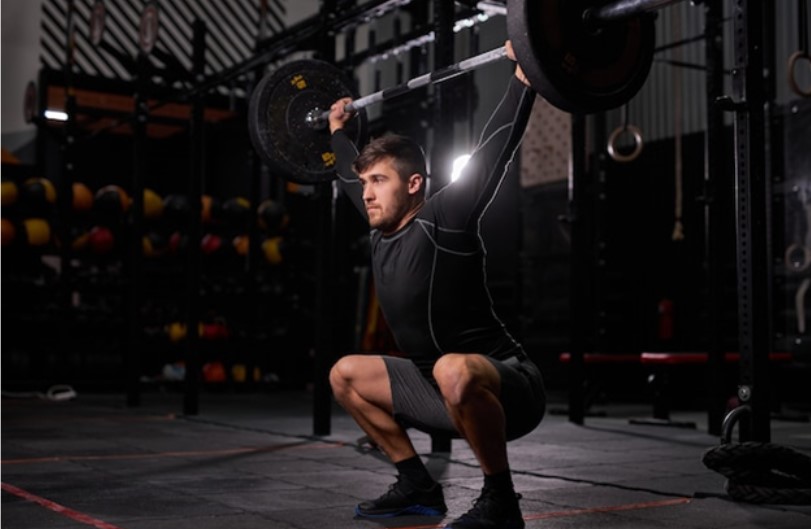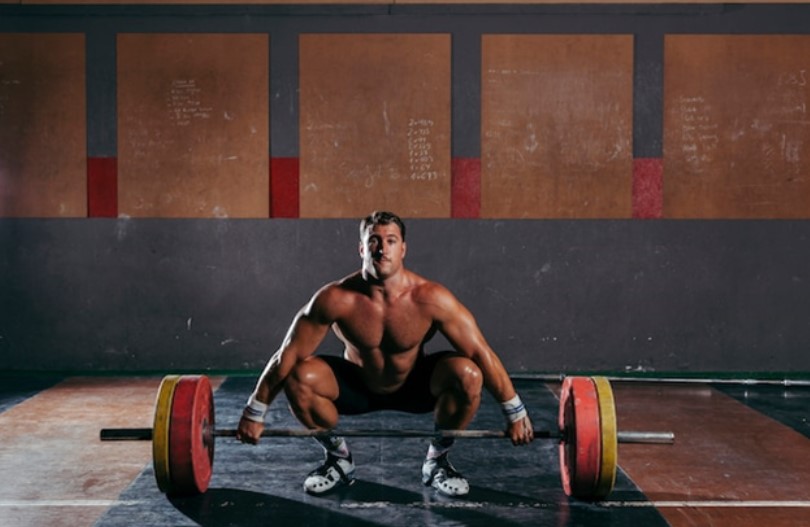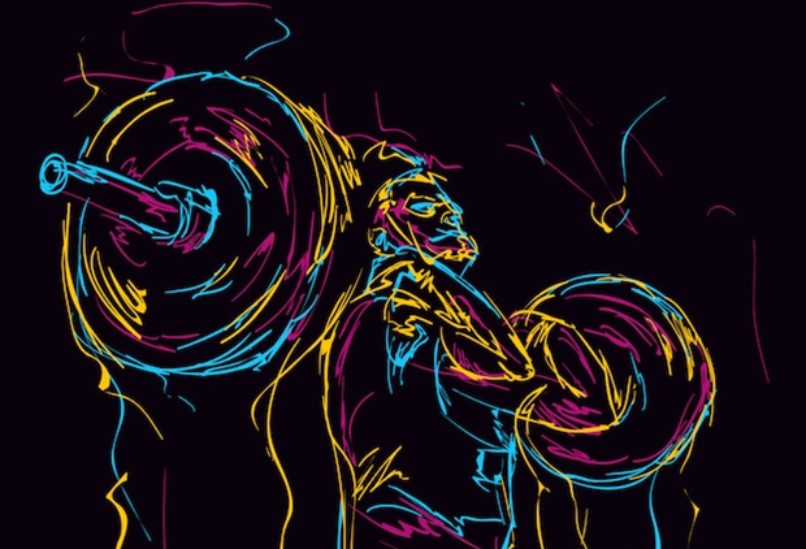Are you looking for a way to build strength and dominate the competition? Powerlifting might just be the sport for you! Powerlifting is a strength sport that involves three main lifts: the squat, bench press, and deadlift.
In this blog, we will explore what powerlifting is all about and provide tips and tricks to help you excel in your training. We will cover everything from workouts and exercises to essential equipment and safety tips. We will also take a closer look at nutrition and recovery strategies for powerlifters. Whether you are a beginner or an experienced lifter, this guide will help you on your journey towards becoming a stronger and more powerful athlete.
What is Powerlifting?
Powerlifting is a sport focused on lifting as much weight as possible in three specific lifts: squat, bench press, and deadlift. Competitors are categorized by weight and have three attempts at each lift. It demands mental toughness, discipline, and proper training, technique, and nutrition for success.
Powerlifting Workouts and Exercises
Powerlifting is a sport in which athletes compete to lift the heaviest possible weight in three lifts: the squat, bench press, and deadlift. Powerlifting workouts are designed to help athletes improve their strength and power in these lifts.
The following are some of the most common powerlifting exercises:
- Squat: The squat is a compound exercise that works the muscles of the legs, hips, and back. To perform a squat, stand with your feet shoulder-width apart and bend your knees until your thighs are parallel to the ground. Keep your back straight and your core engaged throughout the movement.
- Bench press: The bench press is a compound exercise that works the muscles of the chest, shoulders, and triceps. To perform a bench press, lie on a bench with your feet flat on the floor and your back flat on the bench. Grip the bar with your hands shoulder-width apart and lower the bar to your chest. Press the bar back up to the starting position.
- Deadlift: The deadlift is a compound exercise that works the muscles of the legs, hips, back, and shoulders. To perform a deadlift, stand with your feet shoulder-width apart and bend down to grab the bar with an overhand grip. Keep your back straight and your core engaged as you lift the bar up to the starting position.
In addition to these three main lifts, powerlifters may also perform a variety of accessory exercises to help improve their strength and power. Some common accessory exercises include:
- Lunges: Lunges are a compound exercise that works the muscles of the legs, hips, and core. To perform a lunge, step forward with one leg and bend your knees until both knees are bent at a 90-degree angle. Keep your back straight and your core engaged throughout the movement.
- Rows: Rows are a compound exercise that works the muscles of the back and biceps. To perform a row, grab a barbell or dumbbells with an overhand grip and bend over at the waist until your back is almost parallel to the ground. Pull the weight up to your chest, keeping your elbows close to your sides.
- Overhead press: The overhead press is a compound exercise that works the muscles of the shoulders, triceps, and core. To perform an overhead press, grab a barbell or dumbbells with an overhand grip and lift the weight overhead until your arms are straight. Keep your back straight and your core engaged throughout the movement.
Powerlifting workouts can be tailored to the individual athlete’s needs and goals. However, most powerlifting workouts will follow a similar format, with each workout consisting of three sets of three to five repetitions of each lift. The weight used will increase over time as the athlete becomes stronger.
Powerlifting is a challenging sport, but it can be very rewarding. By following a well-designed powerlifting workout program, athletes can improve their strength, power, and overall fitness.

Powerlifting Safety Tips
Powerlifting is a strength sport that involves three main lifts: the squat, the bench press, and the deadlift. It is a great way to build muscle and strength, but it is important to lift safely to avoid injury. Here are some powerlifting safety tips:
- Use proper form. This is the most important safety tip. If you do not use proper form, you are more likely to injure yourself. Make sure to learn the proper form for each lift from a qualified coach or trainer.
- Start with light weights. Don’t try to lift too much weight too soon. Start with light weights and gradually increase the weight as you get stronger.
- Use a spotter. A spotter is someone who can help you lift the weight if you get stuck. It is especially important to use a spotter when lifting heavy weights.
- Warm up properly. Warming up helps to prepare your body for exercise and reduce the risk of injury. A good warm-up includes dynamic stretches and light cardio.
- Listen to your body. If you feel pain, stop lifting. Pain is a sign that you are doing something wrong.
- Take breaks. Don’t try to lift for hours on end. Take breaks between sets to let your body rest and recover.
- Stay hydrated. Drink plenty of water before, during, and after your workout.
- Get enough sleep. Sleep is essential for muscle growth and recovery. Aim for 7-8 hours of sleep per night.
By following these safety tips, you can help to prevent injuries and enjoy the benefits of powerlifting safely.
Here are some additional tips to help you lift safely:
- Wear appropriate clothing. Wear clothing that allows you to move freely and won’t restrict your range of motion.
- Use a weight belt. A weight belt can help to protect your lower back during heavy lifts.
- Don’t lift weights when you’re tired or sore. Give your body time to rest and recover before you lift again.
- Be patient. It takes time to build strength and muscle. Don’t get discouraged if you don’t see results immediately. Just keep lifting safely and consistently, and you will eventually reach your goals.

Essential Powerlifting Equipment
Powerlifting is a strength sport that involves three main lifts: the squat, bench press, and deadlift. While powerlifting can be done with minimal equipment, there are several essential pieces of equipment that can enhance performance, improve safety, and provide support during training and competition. Here are some of the essential powerlifting equipment items:
- Barbell: A sturdy and reliable barbell is crucial for powerlifting. Look for a barbell that can handle heavy loads, has a good knurling pattern for grip, and is appropriate for the specific powerlifting federations you plan to compete in.
- Weight Plates: Weight plates are used to load the barbell. It’s recommended to have a variety of plates in different weights to allow for progressive overload in training and to meet competition standards.
- Powerlifting Belt: A powerlifting belt is worn around the waist to provide support and stability to the core during heavy lifts. It helps increase intra-abdominal pressure and can assist in maintaining proper form and reducing the risk of injury.
- Knee Sleeves/Wraps: Knee sleeves or wraps are designed to provide compression and support to the knees during squats and other leg exercises. They can help keep the knees warm, provide stability, and offer some protection.
- Wrist Wraps: Wrist wraps offer support and stability to the wrists during heavy pressing movements like the bench press. They can help prevent wrist hyperextension and provide extra confidence in handling heavy loads.
- Lifting Shoes: Proper footwear is essential for powerlifting. Look for shoes with a flat and solid sole, good traction, and a secure fit. These shoes can provide a stable base and improve force transfer during lifts.
- Lifting Straps: Lifting straps can be beneficial for heavy deadlifts or pulling movements. They loop around the bar and provide an extra grip assist, allowing you to focus more on your back and leg muscles.
- Chalk: Chalk is used to improve grip by reducing moisture on the hands. It can significantly enhance your ability to hold onto the barbell during heavy lifts, particularly when the hands get sweaty.
- Bench Press Equipment: If you’re specifically focusing on the bench press, you may want to invest in a sturdy and adjustable bench, spotter arms or safety pins, and possibly a bench press shirt (depending on your level of competition).
- Power Rack or Squat Stand: A power rack or squat stand is a versatile piece of equipment that allows for safe and effective squatting and pressing movements. It provides safety catches or spotter arms to catch the barbell if you fail a lift.
Remember, while these pieces of equipment can be beneficial, it’s important to focus on proper technique, progressive overload, and structured training programs to ensure long-term progress in powerlifting.
How to Get Started with Powerlifting?
Powerlifting is a strength sport that involves three main lifts: the squat, the bench press, and the deadlift. It is a great way to build strength, muscle, and power. If you are interested in getting started with powerlifting, here are a few tips:
- Find a good coach. A good coach can teach you the proper technique for the three lifts and help you avoid injury.
- Start with a beginner program. There are many beginner powerlifting programs available online. These programs will help you learn the lifts and gradually increase the weight you are lifting.
- Be patient. It takes time to build strength. Don’t expect to be able to lift a lot of weight right away. Just focus on learning the lifts and gradually increasing the weight over time.
- Eat a healthy diet. Powerlifting requires a lot of energy. Make sure you are eating enough calories and protein to support your training.
- Get enough sleep. Sleep is essential for muscle growth and recovery. Aim for 7-8 hours of sleep per night.
If you follow these tips, you will be well on your way to becoming a powerlifter.
Here are some additional tips for beginners:
- Start with light weights and gradually increase the weight as you get stronger.
- Focus on form over weight. It is more important to lift the weight with proper form than to lift a lot of weight with bad form.
- Don’t be afraid to ask for help. If you are not sure how to do a lift, ask a coach or experienced lifter for help.
- Be patient. It takes time to build strength. Don’t get discouraged if you don’t see results immediately. Just keep training and you will eventually see progress.
Powerlifting is a great way to improve your strength, muscle, and power. If you are interested in getting started, follow these tips and you will be on your way to success.
Let’s Sum Up
In conclusion, powerlifting is a sport that requires dedication, discipline, and hard work. To excel in this sport, you need to focus on building strength and technique, as well as taking care of your body with proper nutrition and recovery strategies. With the right mindset, equipment, workouts, and safety tips, you can dominate the competition and reach new heights in your lifting journey. Remember to avoid common mistakes and always prioritize safety when lifting heavy weights.



